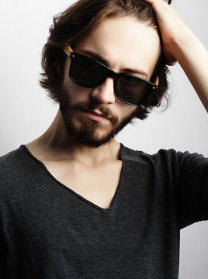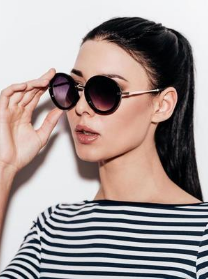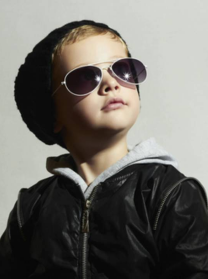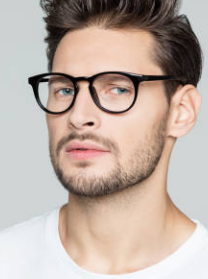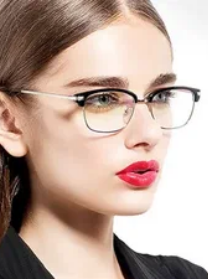FAQ
Foam and Anti-fogging treatment for Ski Mask
Foam
As you will probably notice the ski masks are covered around with foam. There can be a single, double, or even triple layer of foam. The more foam the more comfortable it will feel.
It will also help to not steam up your mask as the air between you and the mask is recycled a lot easier.
Anti-fogging treatment
Almost all ski masks come with an anti-fog coating. But to be sure choose a mask with a double shield. What it means, an air pocket will be formed between the two lens layers of the mask and it will act as a thermal filter.
Ski mask size
There are different sizes of masks and different styles. It would be ideal when choosing a new pair of goggles to have your helmet with you.
This way you can make sure the two pieces of equipment are compatible with each other and not too large or too small. If you feel some pressure on the nose means that your helmet is pushing your mask down and will definitely feel uncomfortable after a long day of skiing. So, you should probably go for a smaller size.
Some masks are made larger at the front and with two small gaps on each side on the back, in order for you to wear your optical frames under the mask. People with high prescriptions might find this useful, especially If they do not wear contact lenses.
Anti-scratch coating Ski Masj
Most ski masks are equipped with an anti-scratch coating. It will make the lens resistant to a few scratches. A scratch can affect your field of view if it's in a place where you look through. It can also affect the cosmetic appearance, especially on mirrored lenses.
Choosing the correct color for Ski Mask
It is important to talk about the difference each color makes in your vision and not choose them solely based on what matches with your outfit (like we all do).
Grey:
- Reduces the intensity of light without altering color vision
- Useful when color vision is important
Brown:
- Enhance contrast as it will stop a reasonable amount of blue light
- Works well in variable light conditions
- Works well on judging distance
Green:
- Provides cool shooting tone to colors
- Filters some amount of blue light
- Enhances contrast in low light conditions
Amber/orange:
- Filters blue light
- Enhances contrast
- Will distort color perception
- Good for overcast, hazy or foggy conditions
- Enhances depth perception
Yellow/ bronze:
- Blocks all blue light
- Will distort colour perception
- Good for overcast, hazy or foggy conditions
- Enhances depth perception
Pink/ Purple:
- Improves visual clarity
If you decide to choose one of the colors above with a mirrored lens, that will be a plus for you as the light will be reflected back.
Ski Mask and Polarized lenses
On the one hand, polarized lenses are amazing for skiing, reducing all the glare you get, not only from the sun but from the snow too.
On the other hand, you will not be able to distinguish the difference between ice and snow are even be able to tell where are ‘bumps.
Choosing to have them or not is your choice. What you should take into account is the type of skier you are, and noticing small details like these are important. Many Opticians suggest against them.
Prizm lenses are also available. These lenses are being made with the appropriate technology in order to manipulate the color spectrum to your advantage by enhancing colors. As a result, the contrast and depth perception will be increased and the glare will be reduced. You might consider having this in your goggles.
Photochromic/ transition lenses
Photochromic or transition lenses are the ones changing brightness under the sunlight.
The more amount of UV light they come in contact with, the darker they get. Meaning, on a foggy day they will be clear and as soon as the sun comes out, it will take a few seconds for them to change to darker lenses.
This way you will have a pair of goggles adapting to the weather condition and you will not have to carry a 2nd or even 3rd pair of goggles with you.
What is the importance of the lens brightness?
Lenses with tint on category 0 are mostly used for night time, as there is hardly any tint.
Category 1 lenses are for foggy days or when clouds have covered the sun and the amount of light is limited.
Category 2 is darker and better used in mixed weather conditions. Not sunny but not foggy either.
Category 3 lenses are the best-adapted lenses for sunny days, blocking 82-92% of light and letting you enjoy the time skiing without worrying about the sun.
Category 4 lenses are hardly ever found as they are a solid color. They could be useful for someone whose eyes are light-sensitive.
Lens darkness and amount of light passing through Ski Mask
All the lenses are available in different categories depending on the amount of light coming through.
The category depends on how dark is a color and what amount of light can pass through the lens.
LTF: Light Transmission Factor, the amount of light passing through the lens.
Absorption: is the amount of UV light absorbed, coming from the sun
|
Category |
LTF in % |
Absorption of UV light in % |
|
0 |
80-100 |
0-20 |
|
1 |
43-80 |
20-57 |
|
2 |
18-43 |
57-82 |
|
3 |
8-18 |
82-92 |
|
4 |
3-18 |
92-97 |
Ski Mask
Choosing the correct type, color, and style of your ski mask is necessary not only for cosmetics but for optics too.
A high level of ultra-violet light enters the eyes when skiing. At high altitudes atmosphere is clear and snow reflects UV rays which makes the situation even worse as more UV exposure is higher. Over- UV exposure can relate to cataracts and cancer
There are different things you need to be concerned about when choosing the right mask for you.
Every time should I check my eyes?
Preventive eye screening at regular intervals (if not every six months, every year) can not only detect any sight-impairing diseases in a timely manner, but also detect chronic health problems that begin with other organs and systems.
What does the Dk / t mark on the contact lenses mean?
The Dk / t indicator is about the air permeability of the contact lens. Prior to the final approval and certification of a contact lens model, it also passes the air permeability test. The air permeability test as well as the measurements are performed on a laboratory scale with standard scales applicable to all manufacturers. In conclusion, the higher the Dk / t, the more oxygen passes through the contact lens during use and ends up in our eyes.
What does the BC symbol on the contact lens packaging indicate?
The BC or base curve indicates the curvature of the inner surface of the contact lens in mm. The larger the base curve (BC) the more flat the contact lens is, while the smaller the base curve (BC) the curved the contact lens.
What does the DIA indicate on the contact lens packaging?
The DIA or diameter indicates the diameter of the contact lens in mm. It is directly related to the size of the contact lens. The larger the DIA value, the larger the diameter of the contact lens, while the smaller the DIA value, the smaller the contact lens diameter.
Colored Contact Lenses. Are They Dangerous?
Of course,they are not dangerous as long as their user as in all other types of contact lenses makes good use of them. Colored contact lenses are either decorative or simultaneous and corrective and are medical devices made under strict specifications.
Is there an age limit on the use of contact lenses?
The best age at which to use contact lenses may depend on the physician's decision, initially for children. Adults who already use contact lenses may in the future have difficulty using them because of dry eye .
Do you work with insurance funds?
Of course. We work with all insurance funds. If you have a receipt from your fund, please let us know in the order comments to let you know the process.
When Do I Need Thinner Lenses?
When your disease degrees is above 2 or 3, it is advisable to buy thinner lenses. Bones are ideal for covering the thickness of the lens, while metal or frame-free frames (Grif / Nylor) are not suitable for large numbers as the aesthetic effect will be bad, unpleasant. Of course the choice is always yours.
What payment methods do you accept?
You can complete your order by paying by deposit, bank deposit and Paypal with your account or credit card.
What are polarized lenses?
Polarized lenses are specially treated lenses that contain filters inside. That is, they can also eliminate reflections, especially those caused by the sun, after rain or snow. This category of lenses for sunglasses is recommended for those who drive long hours. Their use in children is also considered necessary.
Whenever do we need to consume multifocal eyeglasses?
Presbyopia is a condition that develops over time, from ages 40 to 60-65. It starts at +0.50 degrees initially, and in normal cases reaches +2.50 degrees at the age of 60-65. From 40 to 50 years old, glasses need to be changed every 2-3 years. After the age of 50, this change occurs approximately every 4 years.
What are polycarbonate lenses?
Polycarbonate lenses. These are the most durable lenses available, making them ideal for active children, for use in safety goggles and sports goggles. They usually have scratch resistance and UV protection.
what are photochromic lenses?
Photochromic lenses have the ability to adjust their darkness according to the brightness of the environment. They are state-of-the-art lenses that adapt to any lighting condition. Indoors and at night they are perfectly clear, darkening depending on the natural lighting outdoors. They offer 100% UV protection and are capable of anti-reflective coatings protecting lenses from scratches, dirt and dust.
we have to keep wearing the multifocal glasses all the time?
It depends on the type and amount of refractive anomaly you have. At high ammetropic rates for long distances (myopia, astigmatism and hypertropia), continuous use of multifocal glasses for better vision at all distances is recommended. If you still have problems with vision alone (presbyopia), then use focal glasses only for reading, for office use, etc.
What are the disadvantages of multifocal glasses
In order to achieve clear vision, free eye movement is restricted. For example, on the bike you have to make a small downward movement with your head (and not just your eyes) to see your hands. Due to the optical properties of the lens, it takes time to get used to it. (Usually one to three days) The fields of vision in the far and near range are smaller than those in single-focus glasses.
What are the advantages of multifocal glasses?
The intermediate vision achieved through the 'channel' enables a medium vision that does not exist in the binocular glasses. You wear them all day long and you never have to take them off to wear them, as they improve vision at all distances. It doesn't need to have two different glasses (near and far). They are more elegant and tasteful than double-sided glasses.
When should we wear multifocal glasses?
Over time, the visual acuity of the eye decreases. This is how Presbyopia is created. The reason is the decrease in the elasticity of the eye lens. Tightening the lens results in a reduction in eye adjustment that greatly affects close vision.
What are multifocal eyeglasses?
They are vision glasses that improve vision at all distances at the same time, varying degrees in a single lens without interrupting vision as in binocular lenses. The lens is divided into three zones: The upper field of vision clears distant vision, the lower field of vision improves near vision. The intermediate field of vision is designed as a 'channel' and is ideal for any object we want to see in the distance.
Shipping Methods
For more information on shipping and shipping costs, please click here → https://www.eyeland.gr/tropoi-apostolis
What is the refractive index 1.74? What is recommended?
It's the thinnest organic lens with a refractive index of 1.74, anti-reflection coatings and hardening for cleaner vision. Recommended for recipes above -6.00 prescription.
What is the refractive index 1.67? What is recommended?
Organic lens with a high refractive index of 1.67, anti-reflective coatings and hardening for cleaner vision. 40% thinner and 42% lighter than the standard lens 1.50. Recommended for recipes above 4.00 prescription.
What is the refractive index 1.6? What is recommended?
Organic lens with a high refractive index of 1.61, anti-reflective coatings and hardening for cleaner vision. 35% thinner and 40% lighter than the standard lens 1.50. Recommended for prescription up to 7.00 points. If you have more than 7.00 degrees, your glasses can go thicker.
What are anti-reflective coatings?
Anti-reflection coating is a treatment that is performed on ophthalmic lenses to counteract unwanted reflections. It provides greater clarity in vision giving up to 99% light permeability. Anti-reflection coating is useful for anyone wearing glasses as it improves vision at night and offers comfort for work in front of the computer. It reduces the dullness, offers anti-scratch protection. Also, the coatings make the lenses look thiner than they really are.
Index of Refraction 1.5.What is proposed?
It is a simple organic lens and is recommended for prescriptio up to 2.00dpt. If you have more than 2.00 degrees, your glasses may go thicker.
What is a Refractive Index of a Lens?
It is a technical feature of the subject matter that its change has the effect of changing its thickness. The refractive index for traditional crystal and traditional organic is about 1.5. When this number increases, the thickness of the lens decreases. In the crystals, lenses are available with a refractive index of up to 1.9 and in organics up to 1.74 while the polycarbonate is available with a refractive index of 1.58.
Can I use make-up with my contact lenses?
Wear your lenses before applying make-up and, if possible, use products without oils and perfumes You can often replace your own products. We recommend changing the mascara every three months, the alaineer every three months and the shadows every six months. Use waterproof mascara and ailiner so that there is no risk of them leaving and dissolving. Avoid specific lashes lengthening fibers as they can cause irritation if they are found under your lenses.
What is glaucoma?
Glaucoma is a disease of our visual nerve, with the main cause of high pressure in our eyes. It affects about 3% of the population, and if not diagnosed in time and not treated properly, it can lead, slowly but steadily, to blindness.
What is a cataract?
Cataracts we call the blurring of the crystallized lens inside the eye blurring usually comes from aging while there are cases where the cataract is a congenital (from a hereditary case), metabolic from diabetes or even traumatic. When clouding comes from aging it will be noticed at about 50-60 years old. The cataract is treated only surgically as the lens is removed and a new eyepiece lens is placed, which will be permanent.
What are Blue Coatings?
The blue coating technology, with a special blue absorbing filter, provides the ideal protection against the blue light emitted by all modern electronic devices. It binds about 97% of the harmful, irradiation and eye health, neutralizing the sense of visual fatigue caused by continuous and prolonged use, increases color contrast, while providing maximum clarity without the inconvenient deformations and alterations originally observed.
What is presbyopia?
At the end of the age, the crystalline lens of the eye loses its ability to adapt and is unable to focus on close distances, so patients can not see close. At the beginning of the onset of symptoms, the patient removes the object from his eyes to see more clearly. But, over the years, adaptability has been decreasing more and more so making reading virtually impossible.
What is astigmatism?
Astigmatism is the refractive defect in which the light entering the eye does not focus on a point on the retina but on two vertical lines between them. This results in the patient see distorted and distant and nearby objects. If astigmatism is small, it usually does not cause vision problems. Otherwise, it can cause fatigue in the eyes, especially when using the computer or reading.
What is hyperopia?
Hypermetropia is the refractive disorder in which light rays focus behind the retina of the eye rather than on it, as is normal. Depending on the age and degree of adaptation of the crystal lens of the eye, the vision problem also varies. Hypermetropes complain that they do not see clearly the nearby objects, especially in the afternoon, while they can see them normally. But there is also the possibility that the patient can see blurred in both the distance and the distance.
What is myopia?
Myopia is the refractive disorder in which light rays accumulate in front of the retina, so the patient can not see clearly the objects that are at longer distances.
If it is glare, is it necessary to wear the sunglasses?
When it's cloudy, sunlight may not blind the eyes, but sunlight is just as damaging to our vision. In addition, quality sunglasses are so made to protect against ultraviolet radiation UVA, UVB.
From what age can contact lenses be used?
The use of contact lenses is not limited by age. Contact lenses are worn by children as well as older people. They just need to learn how to place, remove and maintain them. Good hygiene and proper care of contact lenses are just as important.
Why should I get glasses if I use contact lenses?
Contact lenses are not for endless hours use. Their application should be 8 to 10 hours a day. If their material is New Technology Silicone Hydrogel then they can be worn for more hours. In cases where your contact lens can be torn, lost or an eye infection (which will prohibit the use of contact lenses) for some days then there should be an alternative. Glasses are essential and you need them before you get contact lenses.
When does not I use contact lenses?
Contact lenses give much better and wider vision than glasses. They should not be used in any environment. When there is dust, intense dryness of the environment, chemical fumes (eg hair dyes) then it is preferable the use of glasses to avoid problems.
The prescription of eyeglasses differs from that for contact lenses?
Yes there are various because of the distance of the eyeglasses. Any different is taken into account when the power of the glasses is greater than 4.00 degrees.
Can I swim with contact lenses?
No, it's not right because there are bacteria in the sea that will stick to the lens and cause problems. Of course the risk of leaving the eyes is great. If you have to see well in the water to wear special protective glasses and disinfect the lenses as soon as you exit the sea.
Why should I change contact lenses in time? I do not feel any discomfort.
You may not feel discomfort, but changing contact lenses according to the instructions of your doctor or your practitioner is important for your eyes to be rested and the use of contact lenses hygienic. If you exceed the recommended contact lens timing schedule, it can attract remnants of your eyes, hands, and the environment. This may cause blurred vision and eye irritation, itching and redness.
Can I wear contact lenses when I do sports?
Contact lenses are great for sports and a lively lifestyle. They give you clear vision, relieving you of concern if they will blur, fall or break the glasses. And, unlike glasses, you can wear them with glasses-ski masks or sunglasses. In addition, contact lenses provide stunning peripheral vision. They do not prevent you from seeing what is happening around you when you participate in activities and sports.
Is it possible to lose my contact lenses behind my eye?
No. It is impossible that a contact lens is lost behind your eye. There is a film that covers your eye and connects it to the inside of your eyelids, so the lens can not be lost.
s it true that reading a low-light can cause damage to the eyes?
Reading in low light can get tired and cause a headache, but the eyes do not get any damage. For centuries reading in the evening was under the trembling candle light!
THE CHILD'S VISION IS AFFECTED BY USE OF SMARTPHONES AND TABLETS?
Of course! Keeping children indoors, combined with the use of electronic devices, increases the chances of developing myopia.




 EL
EL
 Login
Login 

